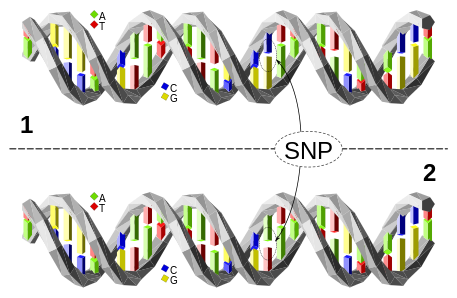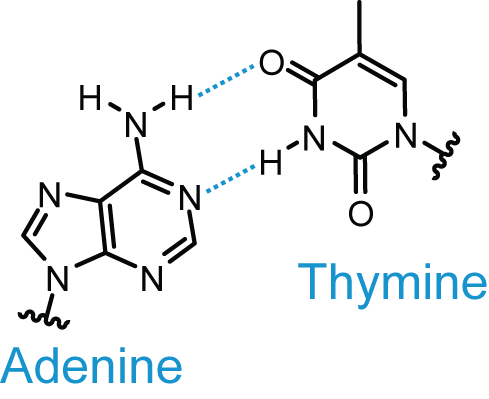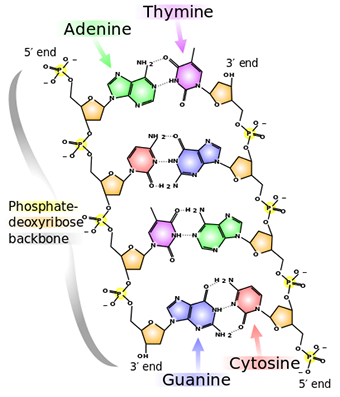Genetic Origins

Contents
- Understanding DNA Tests
- The Y Chromosomal DNA Test (yDNA)
- The Autosomal DNA Test (atDNA)
- The Mitochondrial DNA Test (mtDNA)
- Major DNA Testing Companies
- More on Haplotypes, Haplogroups and Extended Family Research
- Recommended Reading
- Our Dreifussbros Genetic Origins
A major clue as to the meaning of the word "genealogy" is in the root of the word, gene. Genealogy is the study of families, their lineages and history. In a genetic sense, genealogy (sometimes genetic genealogy) is the investigation of those who share genetic makeup from common ancestors. Because a person's DNA, easily obtained from a small saliva sample, contains information that has been passed down from his/her ancestors, analysis of DNA is now being used to aid genealogical research. It also interesting to many people who may or may not have an interest in genealogy but fascinated by finding about their ethnic origns thousands of years ago. Now packaged tests, most commonly used from three on-line companies can yield information both in the genealogical time frame ( ~ past 5-7 generations) and even several thousands of years ago. The tests are simple to do (sending a saliva sample or oral swab by mail to a test center). Costs have been reduced significantly and are expected to further decrease while offering an expanded number of tests.
Understanding DNA Tests
To get the most, however one needs to understand the options and what each can and cannot do. The options involve the type of DNA test which is done. Each has a different purpose with its own strengths and weaknesses.
Genes (made from long segments of DNA) are our body's blueprints for our biological makeup, our sex, metabolism, hair color, facial appearance, development - literally everything that make us up and distinguish us from someone else. They are contained within 23 pairs of chromosomes in the nucleus of most of the cells in our body, so that they can reproduce. Most cells also contain shorter segments of circular DNA in their mitochondria which are involved in obtaining energy needed for the cell. Mitochondria are organelles outside of the nucleus.
Most DNA is exactly the same in all human beings. Advances from the Human Genome Project have made it possible to distinguish locations (called "markers") on the different chromosomes and the mitochondrial DNA that differ person to person. DNA consists of extremely long chains of four organic molecules known as nucleotides, which are frequently referred to by their abbreviations: A, C, G and T. Genetic markers that distinguish us consist either of variations in individual nucleotides at specific locations along a chromosome (called SNPs or single nucleotide polymorphisms) or a variation in the number of times short segments of nucleotides repeat (called STRs for short tandem repeats) at specific locations along a chromosome. DNA testing involves examining different STRs and/or SNPs in one or more chromosomes.
These genealogical DNA tests allow two individuals to find the probability that they are, or are not, related within an estimated number of generations. In most cases, companies that provide these services will compare your results with many thousands of others who have taken the same test and provide you with contact information with others who are believed to be related and an estimate of the relationship. For most genealogists, the autosomal tests are the most valuable for those who are interested in using genetic testing to assist genealogy obtained from historical records.
One drawback of genetic testing come from those who have not bothered to do any conventional genealogy (search for paper records of their ancestors) who waste their own time and yours.
Tests of interest to the genealogist include the following:
X-chromosomal DNA Test The sex chromosome when paired with another X (one from each parent) determines the individual is a female and when paired with a Y (X from the mother and Y from the father) determines the individual is a male. It is found in the nucleus of every cell of both men (XY) and women (XX). It is passed down with only minor mutations from a mother to both daughters and sons or from a father to a daughter, but not from father to a son. The testing is available but is currently of limited use. It is also beyond the scope of this article and generally is not necessary for the novice in genetic genealogy.
Major DNA Testing Companies
There are three major companies which provide these services. They are: 23andMe, Family Tree DNA (FTDNA) and AncestryDNA. Dreifussbros.com has experience with all three companies. We find the autosomal tests the most useful since verifiable matches could be made. AncestryDNA provided us with the most verifiable matches and less by Family Tree DNA and 23andMe. We did find the health traits available from 23andme to be someone gimmicky if one is primarily interested in genealogy and don't recommend paying any fee they charge for that addition. Dreifussbros.com has already helped relatives and many other novices who have sought help to manage, review and/or understand several of the matches of several known relatives. Undoubtedly this comes from the lack of proper support.
An informative and useful autosomal (atDNA) chart for comparison of major testing companies is available here.
An informative and useful mitochondrial (mtDNA) chart for comparison of major testing companies is available here.
An informative and useful Y-DNA SNP chart for comparison of major testing companies is available here.
An informative and useful Y-DNA STR chart for comparison of major testing companies is available here.
More on Haplotypes, Haplogroups and Extended Family Research
First a few definitions. The first two are easily confused.
A haplogroup is a genetic population who share a common ancestor on the patrilineal or matrilineal line. Haplogroups are assigned letters of the alphabet, and refinements consist of additional number and letter combinations.Reference 1 There are two common Haplogroups that are very different, one determined by the Y-DNA test and one by the mtDNA test. For the yDNA tests, FTDNA normally predicts the Haplogroup based on the from 12, 37, 67 or 111 Marker tests. It is confirmed by further SNP testing, such as that provided by SNP panels (formerly known as deep clade tests). Haplogroups are often used to define genetic populations that have common geographically origins.
A haplotype (also known as a signature, a DNA signature, or a genetic signature) is a set of markers (polymorphisms) on a single chromosome that tend to be inherited together. A haplotype can refer to a combination of alleles or to a set of single nucleotide polymorphisms (SNPs).Reference 2
There is an important distinction between a haplotype (defined by STRs) and a haplogroup (defined by SNPs). Haplogroups represent the major branches on the mitochondrial or Y-chromosomal phylogenetic tree and originate from a common matrilineal or patrilineal ancestors, respectively. Haplotypes are the group of genes that together are inherited from a single parent in each haplogroup. A very good, simplified introduction to haplogroups can be found at this site.
Clades, Subclades and Clusters: Clade is commonly used in genetic genealogy to mean haplogroup. The several haplogroups together form the Haplogroup Tree". Reference 3
A Single Nucleotide Polymorphism (SNP) is a variation in a single nucleotide (adenine, thymine, cytosine snf guanine) that occurs at a specific position in the DNA. For example, at a specific base position in the human genome, the base (nucleotide)C may appear in most individuals, but in a minority of individuals, the position is occupied by base A. There is a SNP at this specific base position, and the two possible nucleotide variations – C or A – are said to be alleles for this base position.
DNA and Its Parts:
The upper DNA molecule differs from the lower DNA molecule at a single base-pair location. The colored bars represent base pairs (see below).
Base Pairs
A Chemist's View
of DNA:
By Madprime.This vector image was created with Inkscape., CC BY-SA 3.0, https://commons.wikimedia.org/w/index.php?curid=1848174
A short tandem repeat (STR) in DNA occurs when a pattern of two or more nucleotides are repeated and the repeated sequences are directly adjacent to each other. An STR is also referred to as a microsatellite. The pattern can range in length from 2 to 16 base pairs (bp) and is typically in the non-coding intron region. A short tandem repeat polymorphism (STRP) occurs when homologous STR loci differ in the number of repeats between individuals. By identifying repeats of a specific sequence at specific locations in the genome, it is possible to create a genetic profile of an individual. Autosomal STR analysis has become the prevalent analysis method for determining genetic profiles in forensic cases. Y-chromosome STRs (Y-STRs) on the Y chromosome) are used in genealogical DNA testing in surname DNA projects. Reference 4
Recommended Reading
A fairly good resource, which is easier for most people to deal with is The Family Tree Guide to DNA Testing and Genetic Genealogy by Blaine T. Bettinger 2016; Family Tree Books. It is easier to understand and much more structured than the online guides produced by the testing companies, although it is far from perfect. Fortunately most of the book is clearly written including the more important aspects of the book.
Other references:
ISOGG Wiki - a free genetic genealogy encyclopedia
SNP testing - type of testing available from different companies for Haplogroup confirmation.
Genetic Origins of Our Dreifussbros Family (coming soon).



© 2016 DreifussBros.com
Contact Us for password information or for Comments
Web Master: Pete Dreifuss - Date of last revision 17 Jan 2022
